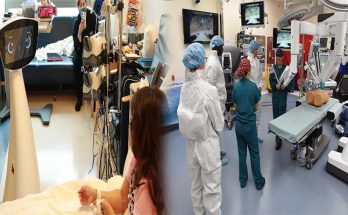As of 2019, the number of freelancers working in Singapore has grown to 211,000 residents. As the result of the COVID-19 pandemic, the number is expected to rise sharply with the soft economic conditions and job shortages expected to continue throughout 2021.
Unfortunately, for most freelancers, home ownership is a tricky task to navigate. Home loans tend to be more favourably geared toward employed individuals who earn a regular, salaried income.
However, if you intend to take up freelancing as a long-term occupation, there are several things you should take note of before applying for a home loan from a bank. If you are diligent with declaring your income and contributing to Medisave, CPF and Income Tax, your choice to enter the gig community would not be one that you regret when it comes to buying your own home.
Establish a Realistic Property Ownership Timeline
Before you embark on applying for a loan, you need to ensure that you are in the best possible place to get it. If it has been a bad year for you financially, we suggest making sure that your earnings are back up for at least two years before you apply for a home loan (although most banks look at one year).
The good news is that because banks look at your IRAS Income Tax Notice of Assessment (NOA) and a 30% haircut is already taken on the variable income, banks don’t necessarily look at how “stable” your income is, or the exact consistency between months.
Generally, the eligibility criteria for a freelancer are slightly different from a salaried employee. But in any case, it is good practice to give yourself some time to save up a buffer of at least six months worth of mortgage repayments in case of a rainy day.
Criteria Affecting your Mortgage and your Eligibility Income
Clearly income is the first thing that any bank will take into consideration when anyone applies for a personal home loan. As a freelance, your first concern may be around income stability. However, as mentioned above, this is not really a concern for banks.
Story continues
Banks apply the same “rules” for salaried and self-employed people, in that all variable income will receive a 30% haircut. The difference is that for most salaried workers, only a small part of their income is variable, so it’s not as significant. For freelancers, your entire salary is likely variable.
Say you earn a total of $5,000 a month on your freelancer income. Since this is considered variable income, you will have to take a 30% haircut; in other words, the bank will only consider 70% of your declared income as a basis for a loan offer. This means that your mortgage will be based off a $3,500 income, which significantly reduces how much you can borrow. As most banks do not allow for your total debt repayments to exceed 60% of your income, your monthly mortgage repayments cannot exceed $2,100 every month.
Taking the above into consideration, you might have to opt for a property of lower value or reassess your client portfolio to maximise your mortgage.
CPF Contributions
Most people opt to use their CPF Ordinary Account (CPF OA) to foot the downpayment for their property, whether fully or in part. As such, some people may consider topping up their CPF OA before applying for a mortgage. This could work, since if you have sufficient funds you won’t have to worry about the downpayment, but it may affect your CPF withdrawal limits.
Credit Score
When it comes to home loans, bank loans will look at your credit score. Your credit score is a gauge of your ability to repay the debt, so it is a “safe” bet for banks that you will pay back your mortgage payments if you are able to make timely payments on your credit. Conversely, late payments will affect the loan that a bank is willing to give you as well as the loan tenure you get. Check your credit score to know where you stand on this.
Employment Stability
If you are realising that your freelance income will not cut it for a sizeable personal mortgage loan, you might want to come up with other means of income. If you are deciding to make the switch to full-time, do note that you will need to submit at least 3 months of pay slips to the bank in order to be considered as a salaried employee.
Another way is to expand your business to include other gigs that can contribute to your monthly income.
Tax Returns
Firstly, your business needs to be in existence for two years before the bank can recognise your self-employed income. Generally, you should ensure that your tax returns for the last two years provide a full and pleasant picture of your ability to earn income for yourself.
If your computerised slips and bank statements do not provide a full enough picture, this will be able to keep your accounts in check and establish a stronger picture with your bank of choice.
Total Debt Servicing Ratio (TDSR)
The TDSR or Total Debt Servicing Ratio will affect the maximum amount you may borrow from a bank. This takes into account existing credit payments, debts, loans and so on. Your total credit expenses are required to stay within 60% of your income. However, as banks will only take into account 70% of your income when calculating the TDSR of a freelancer, your TDSR would differ from a salaried employee (with no variable income), assuming the same average monthly income.





